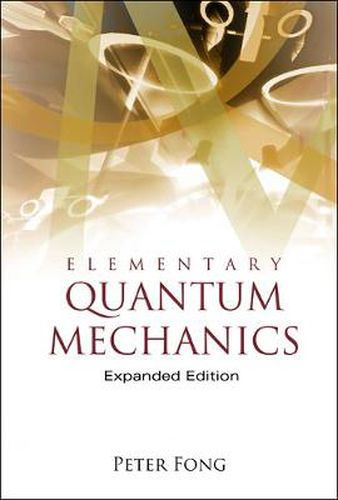Readings Newsletter
Become a Readings Member to make your shopping experience even easier.
Sign in or sign up for free!
You’re not far away from qualifying for FREE standard shipping within Australia
You’ve qualified for FREE standard shipping within Australia
The cart is loading…






Quantum mechanics is a difficult subject for students to learn after years of rigorous training in classical physics. In quantum mechanics they have to abandon what they have laboriously learned and adopt a new system of thinking. In the previous edition of this book, the author reformulated classical mechanics as a classical theory with an undetermined constant. As the constant approaches zero the theory reduces to Newton’s exactly, but when set equal to the Planck constant the theory reduces to the Schrodinger representation of quantum mechanics. Thus the new theory, at least in its mathematical form, can be learned without ramifications and complexity. Over the years, the book has shepherded the growth of a generation of physicists. In this expanded edition, a similar trick is applied to introduce matrix mechanics. The matrix formulation presented allows quantum theory to be generalized to new physical systems such as electron spin, which cannot be done by the Schrodinger approach. The result is a textbook which promises to provide a future generation of students a clear, usable and authoritative resource the fundamentals of quantum mechanics.
$9.00 standard shipping within Australia
FREE standard shipping within Australia for orders over $100.00
Express & International shipping calculated at checkout
Quantum mechanics is a difficult subject for students to learn after years of rigorous training in classical physics. In quantum mechanics they have to abandon what they have laboriously learned and adopt a new system of thinking. In the previous edition of this book, the author reformulated classical mechanics as a classical theory with an undetermined constant. As the constant approaches zero the theory reduces to Newton’s exactly, but when set equal to the Planck constant the theory reduces to the Schrodinger representation of quantum mechanics. Thus the new theory, at least in its mathematical form, can be learned without ramifications and complexity. Over the years, the book has shepherded the growth of a generation of physicists. In this expanded edition, a similar trick is applied to introduce matrix mechanics. The matrix formulation presented allows quantum theory to be generalized to new physical systems such as electron spin, which cannot be done by the Schrodinger approach. The result is a textbook which promises to provide a future generation of students a clear, usable and authoritative resource the fundamentals of quantum mechanics.